| I only
went to the Empress
Hackney a few more
times after seeing How
to Marry a Millionaire
although I would most
certainly have enjoyed
going almost every week.
The cinema showed all of
the 20th
Century Fox productions made
in CinemaScope that
I wanted to see, most of
which were never shown at
the Essoldo Bethnal
Green. Sadly, the Hackney
Kids were not as
nuts as me when it
came to seeing these
films. They were not
regular visitors to the
cinema and their tastes
ran to cowboys
‘n’ Indians and
the occasional period
piece as long as there
were lots of battle
scenes. Sadly, they
did not study the blurb
in the newspapers
that came with the
release of new films and
so were unwilling to go
and see if a certain film
appealed to them or not.
Naturally, this was
somewhat vexing since
I could not rely on going
to the Empress with
them on any regular
basis. In fact I went
with them only on a
couple of occasions.
Sadly, I had to resort to
deception in order
to get to the cinema and
attempt to see certain
films. Tragically, I was
not able to achieve my
goal often. I was also
plagued with an obstacle
thrown in my way by The
British Board of Film
Censors. The Board
constantly saw fit to
give an ‘A’
Certificate to many
of the films that
appealed to me, and to
see these films, someone
over the age of 16
years of age had to
agree to accompany me
into the cinema. I could
not risk going clandestinely
up to Hackney too
often, as I always risked
not finding an adult to
take me in to the
cinema. I suffered just
such a failure on a
number of occasions. As a
result of the discrimination
exercised by the British
Board of Film Censors, supposedly
to protect and shield my sensitivity
together with the
enforcement of their stringent
rules by an over-zealous
cinema management, I
missed seeing many potential
classics. Of
all films missed, The
Egyptian was the
bitterest pill to
swallow, but not far
behind was my failure
to gain entry to see Carmen
Jones. Over the
years, my continual
failure to see this film
took on epic
proportions and many
fellow potential admirers
of this film later led me
to believe that there was
indeed a conspiracy to
keep this film hidden
from the public.
Carmen
Jones is an
interesting film on
several levels. Firstly,
in the United Kingdom it
was advertised as an
All-Black Version of
the Opera, Carmen. At
that time, the only thing
that I had ever heard of
that was All-Black was
The All Blacks, who
weren’t in fact, All-Black!
Secondly, it was a film
made in what would seem
to be record breaking
speed. And thirdly,
it was a film that
disappeared for many
years and was only discovered
by the public when it
was shown at the Joseph
Papp’s Public
Theater in New York
City in the 1980s. The
Public Theater was
founded as The
Shakespeare Workshop in
1954 by Joseph
Papp in the former Astor
Library in the East
Village in Lower
Manhattan. He manage to
persuade the City of
New York to purchase
the building and also
went on to convince them
to allow him to present
works by new playwrights
and performers there.
Since its founding, The
Public Theater has
successfully achieved its
goal. It has brought a
number of innovative
productions to the mainstream
theatre including Hair
and A Chorus Line,
as well as a version
of The Pirates of
Penzance where
several rock stars of
the time appeared in
major roles. In
addition, the Theater
has screened many classic
films and a number of
lesser known forgotten
or lost films including
Carmen Jones. In
1992, the film was
selected for preservation
in the United States
National Film Registry since it
was deemed as being culturally,
historically and
aesthetically significant. Although
the film was never
released on video-cassette
tape, it was
eventually released on digital
video-disc in 2002.
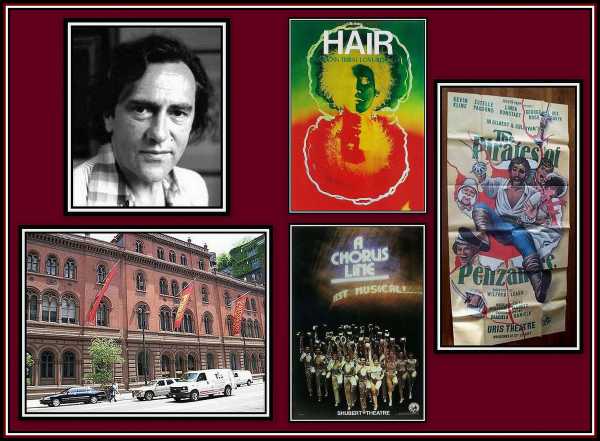
Joseph
Papp and The Public
Theater
The film
is based on the Broadway
Show of the same
name, which in turn is
based on Georges
Bizet’s Carmen. The
show was first presented
on Broadway in
1943. Unlike Bizet’s
opera, the lyrics of Carmen
Jones were written in
English, or rather, in
the English spoken by
Afro-Americans from the
South of the United
States at the time of its
setting. Oscar
Hammerstein II who had
successfully collaborated
with Jerome Kern (Showboat),
Rudolf Friml (Rose
Marie) and Sigmund
Romberg (The Desert
Song and New Moon)
wrote both the book and
lyrics of Carmen Jones.
It was also in 1943 that
he began his most
successful collaboration
when he wrote Oklahoma!
with Richard Rodgers.
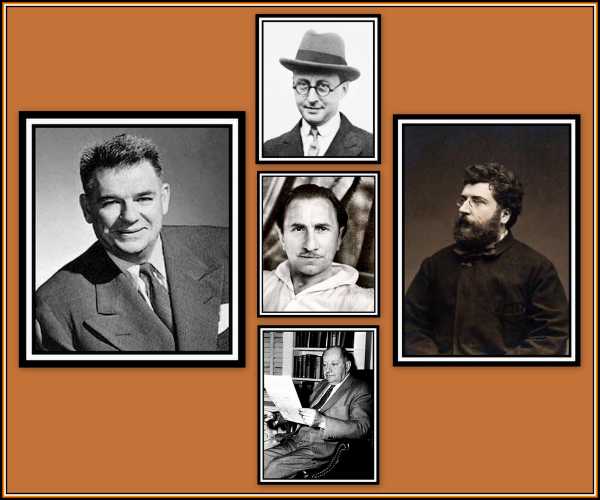
Oscar
Hammerstein II, Jerome
Kern, Rudolf Friml,
Sigmund Romberg &
Georges Bizet
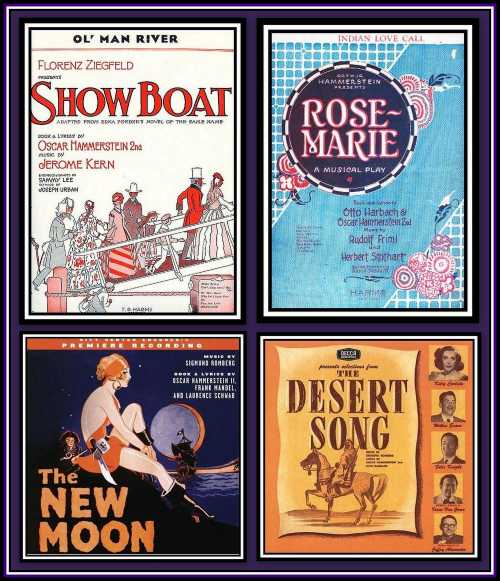
The
Broadway
production of Carmen
Jones was produced by
Billy Rose, directed by
Hassard Short and starred
Muriel Smith in the title
role. It received good
reviews and ran for 503
performances at the Broadway
Theatre from 2nd
December, 1943 until 10th
February, 1945. A
point of interest is that
Cozy Cole, the great jazz
drummer, was employed to Beat
out dat rhythm on da drum
during the
performances and who in
1958 recorded the
classic, Topsy.
The production was
revived twice at New
York’s City
Centre in 1945 and
1946 and later produced
in 1991 at London’s Old
Vic and in 2007 at
the Royal Festival
Hall.
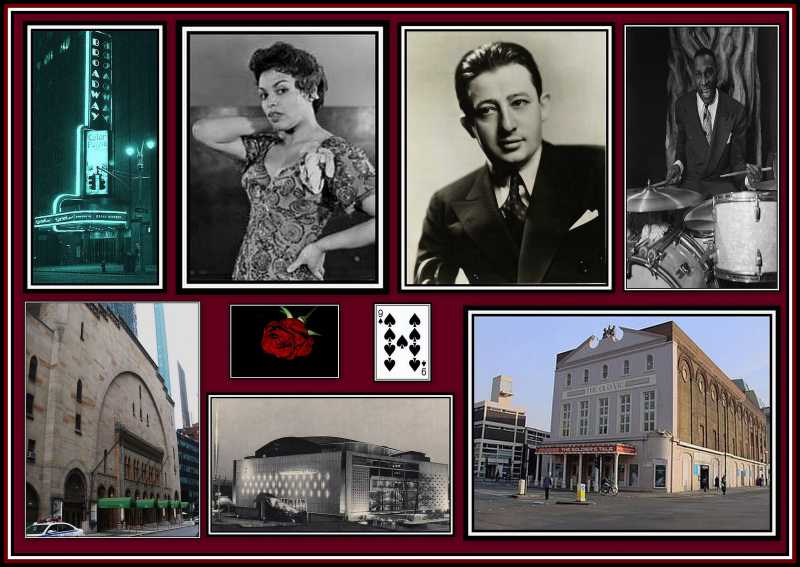
Top
Row: The
Broadway Theatre, Muriel
Smith (the first
Carmen Jones),
Billy Rose &
Cozy Cole
Bottom
Row: New York
City Center, The Royal
Festival Hall & The
Old Vic
Bizet’s
opera is set in Seville
in the early nineteenth
century. Carmen, a
gypsy who works in a
cigarette factory, is
fickle in nature, free
with her affection and
quick to anger. Oscar
Hammerstein II’s Carmen
Jones follows the
opera closely, but with
some notable changes. Its
setting is now the
American South during the
Second World War. Carmen
no longer works in a
cigarette factory,
but now makes
parachutes. As in the
opera, she is arrested
for violence and a
military man is
ordered to take her to a
town close by where she
is to be handed over to
non-military police. The
military man, still a
corporal, but no longer
called Don Jose,
is Joe, a fly-boy
air force man. Carmen seduces
Joe in the hope of
escaping. Although she
has taken a
shine
to him, she
still escapes
and he is sent to the brig
for failing in his
duty. While
waiting for his release,
Carmen spends time at
a Billy
Pastor’s Jive Cafe.
Here she meets, not a
bull fighter, but
a boxer, Husky
Miller,
who is instantly besotted
by her. He offers her and
her two girlfriends train
tickets to Chicago
to see him defend his
title. She refuses, but
is urged to accept by her
friends. Following his
release, Joe arrives
at the cafe and
immediately gets into
trouble. In order to
escape the military
police, Carmen
accepts the train tickets
and she, Joe, and
her girl friends leave on
the next train. Once in
Chicago, Carmen and
Joe are soon out
of money. Joe
cannot work for fear of
being recognised by the
police. When she
seeks out her friends
to ask for a loan, she
meets the boxer again.
During a visit to his
apartment, one of Carmen’s
friends reads
their fortunes in the
cards. Carmen draws the
Nine of Spades
– the Death Card!
Believing that her life
will soon be over, Carmen
becomes determined to
live life to the full! She leaves Joe and
takes up with the
boxer. Joe, now
alone and with little
hope, is consumed
with jealousy
and on the night of his title
fight, he searches
for and finds Carmen at
the arena. He begs
her to come back to him.
Her refusal and his
jealousy cause him to
choke her to death.
In the final scene, Joe
is seen being taken
into custody by the
police. This is great
dramatic stuff!!!
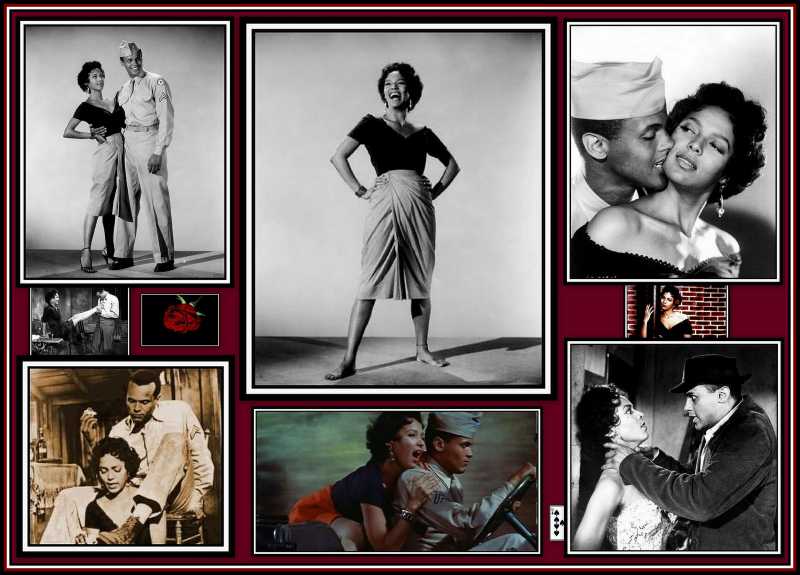
Scenes
from the film, Carmen
Jones
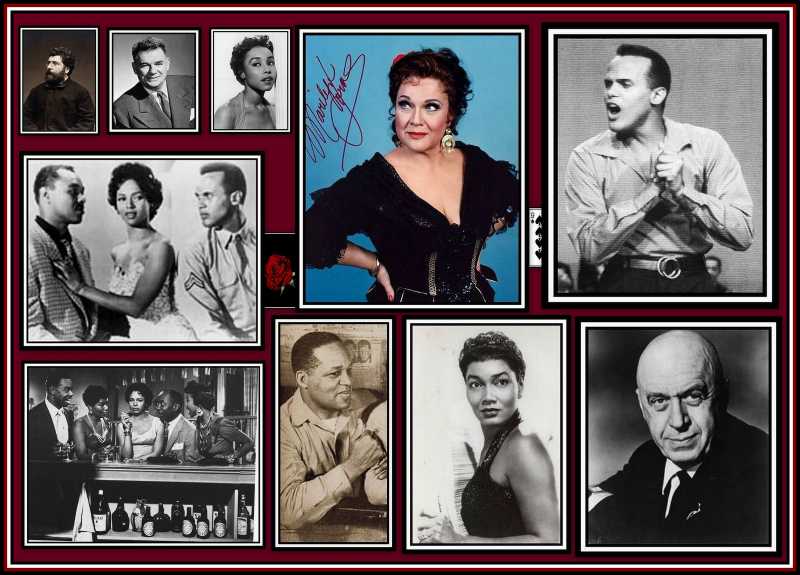
Top
Row: Georges
Bizet, Oscar Hammerstein
II, Diahann Carroll,
Marilyn Horne (singing
voice of Carmen
Jones)
& Harry
Belafonte
Middle
Row: Joe Adams
(singing voice of Husky
Miller, Marvin
Hayes), Dorothy Dandridge
& Harry Belafonte
Bottom
Row: Joe
Adams, Pearl Bailey,
Dorothy Dandridge, Roy
Glenn & Diahann
Carroll;
LeVern Hutcherson
(singing voice of Joe),
Pearl Bailey & Otto
Preminger
Harry
Belafonte, who had
recently come to
prominence as a singer
and entertainer, played
the part of Joe.
Although both he and Ms
Dandridge sang, their
voices were felt
unsuitable for singing
the operatic score. LeVern
Hutcherson
and Marilyn
Horne
were to provide the
singing voices of Joe and
Carmen. Marilyn
Horne said that she tried
to imitate the voice
of Dorothy Dandridge had
she been able to sing in
the proper register and
did so successfully.
The film
was directed by Otto
Preminger and starred
Dorothy Dandridge in the
role of Carmen. I
had seen her earlier in a
small film, Bright
Road, where she
played a schoolteacher. I
have to admit that I did
not connect the
somewhat prim schoolteacher
of Right Road with
the seductive and
sultry Carmen
Jones for many years.
It seems that Otto
Preminger had seen Bright
Road too and had
rejected her for the role
since he felt that she
was unable to play such a
seductive and sultry role.
Apparently, Ms Dandridge
was convinced that she
could and met Herr
Preminger dressed as Carmen
Jones and proceeded
to talk and act as the
character would. It seems
that the director was
taken by her ability to
portray Carmen Jones with
the required degree of sultry
and seductiveness.
This not only got her a
screen test, but
eventually led to her
being cast as Carmen. It
also led to star and
director becoming an
item, as it was once
described, and an open
item at that, which
was still taboo in
1954 in the United
States.

Click
on the collage to see the
trailer of the film
 Ms
Dandridge was a versatile
actress who could sing,
dance and act. She began
performing with her mother
and sisters
at a young age and later
appeared at the Cotton
Club and at the Apollo
Theatre together with
her sister prior to
breaking into film. Her
film career began in 1937
with a small role in the
Marx Brothers film, A
Day at the Races. In
1941, she appeared, along
with her then-husband,
Harold Nicholas and his
brother, Fayard, who
together formed the great
dance duo, The
Nicholas Brothers,
as a Speciality Act, but
without individual
credit, in the film, Sun
Valley Serenade. The
three sang and danced
while the Glenn Miller
Orchestra played Chattanooga
Choo Choo.
Although she could
dance, her ability was
somewhat limited when
compared that of The
Nicholas Brothers. Once
she leaves the screen,
they move into a
higher gear and
display their own
abilities to the full.
While waiting for film
roles, she developed a
night club act and toured
extensively. Apparently
she never enjoyed
performing on stage, as
she suffered with chronic
stage fright. Incidentally,
it is now believed that
she also suffered with manic
depression. Ms
Dandridge was a versatile
actress who could sing,
dance and act. She began
performing with her mother
and sisters
at a young age and later
appeared at the Cotton
Club and at the Apollo
Theatre together with
her sister prior to
breaking into film. Her
film career began in 1937
with a small role in the
Marx Brothers film, A
Day at the Races. In
1941, she appeared, along
with her then-husband,
Harold Nicholas and his
brother, Fayard, who
together formed the great
dance duo, The
Nicholas Brothers,
as a Speciality Act, but
without individual
credit, in the film, Sun
Valley Serenade. The
three sang and danced
while the Glenn Miller
Orchestra played Chattanooga
Choo Choo.
Although she could
dance, her ability was
somewhat limited when
compared that of The
Nicholas Brothers. Once
she leaves the screen,
they move into a
higher gear and
display their own
abilities to the full.
While waiting for film
roles, she developed a
night club act and toured
extensively. Apparently
she never enjoyed
performing on stage, as
she suffered with chronic
stage fright. Incidentally,
it is now believed that
she also suffered with manic
depression.
Click on a
collage to see a SOUNDIE
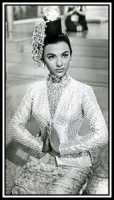 Unfortunately,
the number of acting
roles available to black
women at that time was
few and it was not until
1954 that her big
break came with Carmen
Jones. She became the
first black woman to be
nominated for an Oscar
in the Best
Actress in a Leading Role
category. She
lost to Grace Kelly for
her role in The
Country Girl. Apparently,
although she received
accolades for her role
here, Hollywood producers
did not rush to cast her
in other films. She was
offered the role of Tuptim
in The King and I,
but turned it down on the
advice of Otto Preminger.
He felt that she had
proved her star
quality and, as the
role was a supporting
one, was not worthy of
her talents. It would
seem that she later
regretted this move. Rita
Moreno played the
role
and received much
critical acclaim for
doing so and later would
win an Oscar for playing
Anita
in West Side
Story.
Unfortunately, Ms
Dandrige's only other
major film roles were in Island
in the Sun (1957) and
as Bess, in the
Samuel Goldwyn production
of Porgy and Bess (1959),
also directed by Otto
Preminger. Although she
received good reviews for
her role in the 20th
Century Fox film, Island
in the Sun, the
studio released her soon
after from the three-film
contract she had signed
with them. Despite her
performance in Porgy
and Bess being
nominated for numerous
acting awards, she was
never offered a film role
of note again. Unfortunately,
the number of acting
roles available to black
women at that time was
few and it was not until
1954 that her big
break came with Carmen
Jones. She became the
first black woman to be
nominated for an Oscar
in the Best
Actress in a Leading Role
category. She
lost to Grace Kelly for
her role in The
Country Girl. Apparently,
although she received
accolades for her role
here, Hollywood producers
did not rush to cast her
in other films. She was
offered the role of Tuptim
in The King and I,
but turned it down on the
advice of Otto Preminger.
He felt that she had
proved her star
quality and, as the
role was a supporting
one, was not worthy of
her talents. It would
seem that she later
regretted this move. Rita
Moreno played the
role
and received much
critical acclaim for
doing so and later would
win an Oscar for playing
Anita
in West Side
Story.
Unfortunately, Ms
Dandrige's only other
major film roles were in Island
in the Sun (1957) and
as Bess, in the
Samuel Goldwyn production
of Porgy and Bess (1959),
also directed by Otto
Preminger. Although she
received good reviews for
her role in the 20th
Century Fox film, Island
in the Sun, the
studio released her soon
after from the three-film
contract she had signed
with them. Despite her
performance in Porgy
and Bess being
nominated for numerous
acting awards, she was
never offered a film role
of note again.
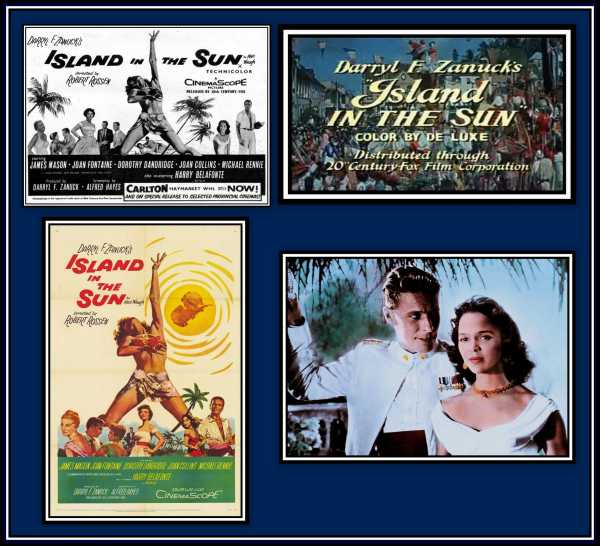
Click
on the collage to hear
Harry Belafonte sing the
title song of the film
ISLAND IN
THE SUN - with John
Justin
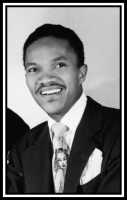 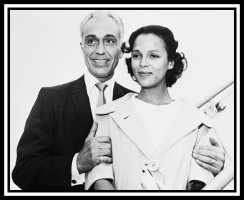 In
1961 with her film career
stalling Ms Dandridge
revived her nightclub act
and toured once more. Her
personal life was also
going from bad to worse.
She had remarried in
1959, but money problems
including a failure to
pay income tax together
with accusations of
physical violence soon
ended this relationship.
Eventually, her inability
to find acting or singing
jobs forced her to sell
her home and place her
daughter from her first
marriage in an
institution for the
mentally ill. Her
situation led to a
nervous breakdown, and
despite talk and plans
for a comeback, on
the 8th
September, 1965, at the
age of 42, she was found
dead by her manager. It
was originally concluded
that she had died from an
accidental overdose of Imipramine,
a tricyclic
antidepressant medication,
but an alternative
conclusion was later
offered when it was
suggested that she had in
fact died of a rare type
of embolism. It
seemed that several days
before her death, she had
fractured her right foot
and fat emboli from
the bone marrow entered
the blood stream and
became lodged in her
brain and lungs. In
1961 with her film career
stalling Ms Dandridge
revived her nightclub act
and toured once more. Her
personal life was also
going from bad to worse.
She had remarried in
1959, but money problems
including a failure to
pay income tax together
with accusations of
physical violence soon
ended this relationship.
Eventually, her inability
to find acting or singing
jobs forced her to sell
her home and place her
daughter from her first
marriage in an
institution for the
mentally ill. Her
situation led to a
nervous breakdown, and
despite talk and plans
for a comeback, on
the 8th
September, 1965, at the
age of 42, she was found
dead by her manager. It
was originally concluded
that she had died from an
accidental overdose of Imipramine,
a tricyclic
antidepressant medication,
but an alternative
conclusion was later
offered when it was
suggested that she had in
fact died of a rare type
of embolism. It
seemed that several days
before her death, she had
fractured her right foot
and fat emboli from
the bone marrow entered
the blood stream and
became lodged in her
brain and lungs.
Click
on the posters for film
clips
Once I saw
the advertisement for Carmen
Jones in the
newspaper, just
like Joe and Don
Jose before him, I
became totally and
utterly besotted by
her and knew that
I had to see this film
and see it as soon as
possible. Although I was
young, the sultry look
and the seductive
pose and manner of Carmen
were not lost on me.
Obviously, I perhaps was
not able to voice my
reaction to my attraction
to this voluptuous
creature in such a
manner, but it was
evidently the case. I
still find the stance of
Carmen Jones to be
provocative and
captivating. As a result
of this stance, and
from a variety of other
sources, I developed an
early taste for what
could only be described
as the exotic! And
to me, at that time, Carmen
Jones was exotic!
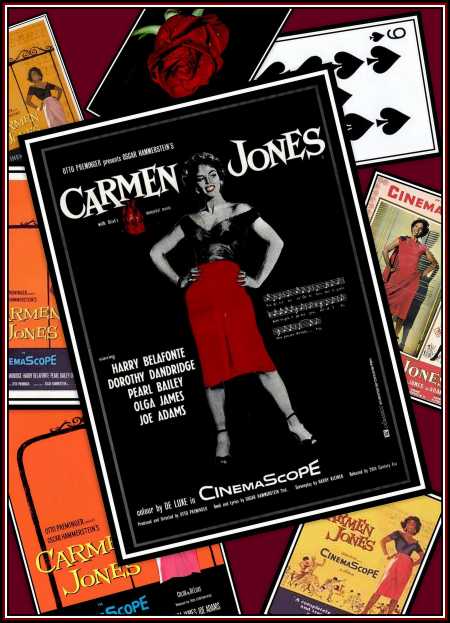
At first I
was not aware that the
film was based on
an opera. I had been subjected
to opera at a very
young age, as both my
father and mother had a
taste for it. They liked
all kinds of music and
had a large gramophone
record collection to
prove it. Although grand
opera was not top
of their lists, they
were not adverse to it,
but perhaps would have
preferred operetta were
they given the choice. I
remember going to see a
production of La
Boheme with them
while I was still quite
small and falling asleep.
Whether this was from
boredom or a result of
the length of the
production, I cannot
recall.

I remember
not being put off when
I discovered that Carmen
Jones was based on
the opera, Carmen. The
Toreador Song
and Habanera
were great favourites
of my father, who would
regularly sing them while
working in his bake
house or soaking in
his bath. As he aged,
sadly he had problems
reaching the higher
notes, which eventually
would give way to croaking
sounds. Sadly, all
attempts to convince the Hackney
Kids that this was positively
and definitely a film
not to be missed failed
miserably even after I
showed them the ripped
from the newspaper picture
of Carmen Jones in
that stance. Obviously
the charms and allure of
Ms Dandridge were lost on
these kids! However,
since they were not lost
on me, I decided that I
was going to have to
resort to deception once
more to get to Hackney.
After all, I could not be
certain that this film
would ever be shown at
the Essoldo Bethnal
Green, and anyway
besides that, I could not
wait for it to come. Here
was another siren whose
beckoning could not be
ignored. And so, I was
willing to deceive
once more and steal
away to the wilds of Hackney.
It was
with much sadness that
after waiting outside the
Empress on Mare
Street for something
like an hour, I have to
report that I was unable
to find an adult to take
me in. Actually only
a few adults had entered
the cinema during my wait
and it was apparent that
this film was not going
to be well received.
Cinema staff of that time
did not particularly
appreciate seeing kids
standing outside the
entrance and asking
adults to take them
in. Eventually, one
of the ushers came out to
me and told me to clear
off! Claiming that I
had a right to
wait outside the cinema, if
I wanted, he
countered that if I did
not hop it and hop it
quick, I would get a
clip ‘round the
ear!!! With regret, retreat
being the better part of
valour, I was forced
to trudge off to the bus
stop and go home.
I did not
take the failure to see Carmen
Jones well and for a
while I gained no
pleasure when I heard The
Toreador Song! Tragically,
I did not get an
opportunity to see this
film elsewhere since it
did not come to the Essoldo
Bethnal Green just as
I had surmised. I was
even more upset about
this than at failing to
see The Egyptian
– well who
wouldn’t be should
one be given a choice
between that stance and
mummies!
Naturally,
I got a grip and
accepted the fact that I
was never going to
see the film! Although I
did not like it, I
knew that I had to accept
it, which I did. After
all, these were the days
before videocassettes and
discs and this
film was apparently not
going to be shown in any revival
house. I knew that I
was going to have to
content myself with the Bizet’s
Carmen. I remember
clearly the first time
that I saw Carmen. I
found myself both
appalled and outraged at
the casting of the gypsy!
Whereas Carmen Jones was
svelte, seductive
and sultry, Carmen
was short,
shapeless and silly.
Obviously being svelte,
seductive and sultry
were not qualities
common to opera
singers, but then no one
is perfect. I have to
admit that although the
alluring Dorothy
Dandridge was both physically
and mentally my
idea of Carmen Jones, she
did lack the vocal range
to sing the role. Anyway,
despite seeing Carmen
a number of times and
enjoying the music, the
acting and the singing,
I have never found myself
seduced visually
by any soprano, but then
another great sadness of
my life is that I never
saw the wonderful Maria
Callas play this role!
Now there would have been
possible perfection! On
record, it is a different
matter for I have a
number of favourite Carmens,
beside the great La
Divina, I have always
had a preference for the
singing of the wonderful
Victoria de los Angeles.
The last time I saw Carmen
was sometime in the
1980s. It was the Peter
Brooke production, which
had been brought over
from England, and was set
in the round, and
proved interesting and
evocative.
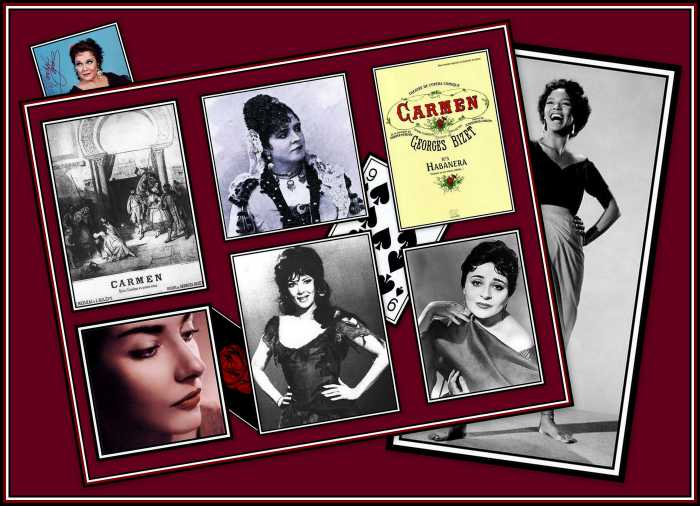
Top
Row: Poster
for the original
production; Celestine
Galli-Marie, the original
Carmen; and Programme
Bottom
Row: Maria
Callas, Anna Moffo and
Victoria de Los Angeles
Behind: Marilyn
Horne (voice of Carmen
Jones) and Dorothy
Dandridge (as Carmen
Jones)
In 1969,
while I was living in
Toronto, I would
occasionally watch one of
the television channels
that showed films at 2
p.m. each Saturday.
Thanks to the efforts of
the people that ran this
station, I was able to fill
the holes in my
education thanks to their
transmissions of a number
of missed films. I
remember on one
particularly grey and
wintery Saturday
afternoon locking my
front door, taking my
telephone off the hook,
turning my television on
and finally sitting
myself down on my couch
with a coverlet close by.
Arranged close by on my
coffee table, I had
previously brought
several drinks and an
assortment of sweetmeats
for possible
sampling. Now I was ready
to settle myself down to
wait for the
station’s
presentation of Carmen
Jones!
I was
quite excited at the
possibility of at last
seeing the film.
After all it had been
about fifteen years since
it had been released. I
felt that I now had a
right to see it! At last,
following all the
announcements implying
that I was now going to
be presented with a spectacle
like no other, as if
I did not know, the 20th
Century Fox Fanfare
was heard and I was
shown once more that
wonderful introduction
that informed me that
here was a CinemaScope
picture. The hair
stood up on the back of
my neck and once again I
was transported back to
the Essoldo Bethnal
Green. And then I saw
a flame and a rose appear
on the screen and the
sound of that exciting
overture came bursting
out of the television!
The
transmission of the film
was in black and white
and somewhat chopped
up. I suspect that
the film had shown a
number of times in the
past and had suffered
from breakages and had
been spliced back
together on numerous
occasions and done so in
haste. The continuity of
the film was sorely
lacking too thanks to
constant interruptions
for commercials, which
advertised various
inane products that I
tried to remember never
to buy in future.
Although I did not watch
the film under ideal
conditions despite my
drinks and sweetmeats,
I was nonetheless
overjoyed to finally see
it and I convinced myself
that it was a great
film that merited being
seen on a big screen in a
glorious picture palace. Perhaps
one day, I would see it
in such a setting where
it would be enjoyed and
seen in all of its former
glory with Colour by
De Luxe together with
the wonders of four-track
stereophonic sound.
Naturally, without
meaning to, such a wish
would mean the rejection
of both the Essoldo
Bethnal Green and the
Empress Hackney as
possible venues. Anyway,
regardless of seeing a
chopped up black and
white version with a
dulled sound and constant
interruption, I was
content. At last I had
seen that sultry,
seductive Carmen and
she, at least, had not
been a disappointment.
I next saw
the film in 1993. At that
time, it was receiving
several showings on the
television channel, American
Movie Classics, which
at one time showed classics
free of commercial
interruption. On this
occasion, I saw the film
in letterbox format and
in colour. Only the four-track
stereophonic sound was
missing! Still, two
wishes out of three
aren’t bad! I was
certainly more critical
of the film this time
around, but I still found
Dorothy Dandridge to be
beautiful, captivating
and a good actress. As I
watched the film, I
recorded it, as this was
the era of the videocassette
and I wanted to have
my own copy for now and
forever! I am glad that I
did since the film was
never commercially
released on videocassette,
which I found
annoying however
it was eventually
released on digital
video disc in 2002.
Naturally I also have a
copy of the disc and it
holds a place of honour
in my collection along
with my videocassette
recordings of Bright
Road and Island in
the Sun where they
wait to be shown at will.
In 1999,
when Halle Berry won the Oscar
for Best Actress
in a Leading Role, she
dedicated the moment
to Dorothy Dandridge,
Lena Horne and Diahann
Carroll. I was very
happy to see that others
acknowledge the enduring
memory and talents of
Dorothy Dandridge, the
actress.
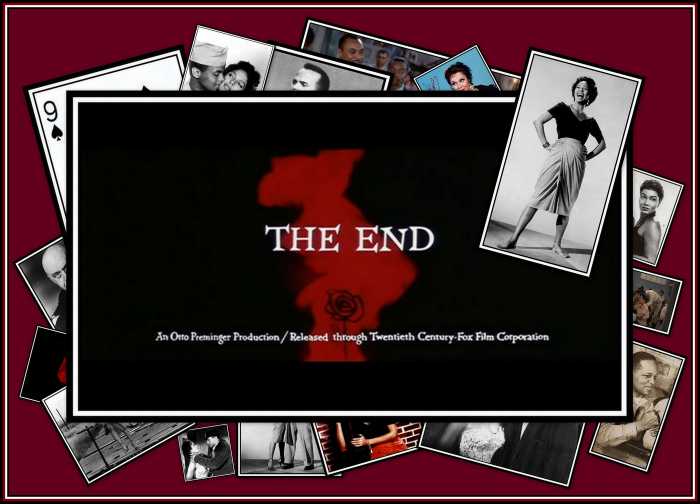
Click
on the collage to see the
Finale of Carmen
Jones
PORGY
AND BESS
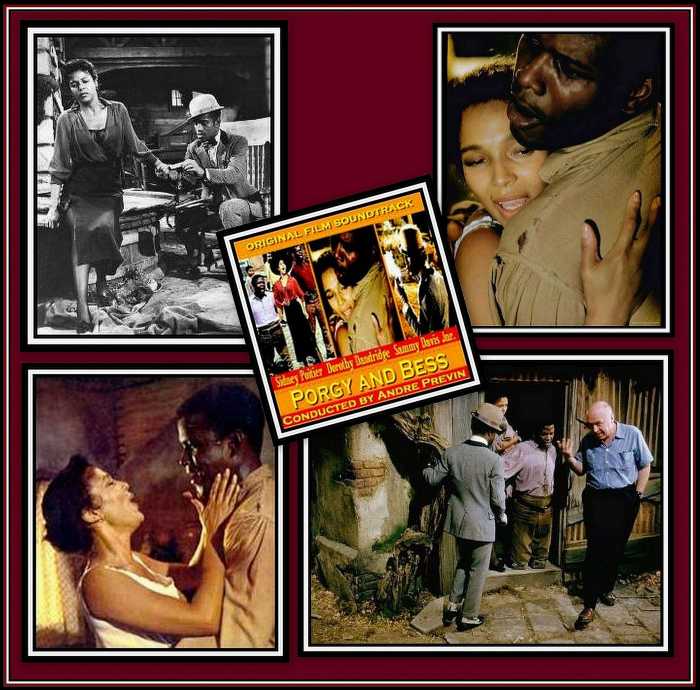
Click on
the collage to hear 'Here
come de Honey Man', played
by Miles Davis
The film, Porgy
and Bess, was based
on the opera written by
George Gershwin, DuBose
Heyward and Ira Gershwin,
which was based on the
book, Porgy, by
DuBose Heyward. Porgy
and Bess was
conceived as an American
Folk Opera and was
first performed in Boston
in 1935 and followed by a
Broadway run of
124 performances. The
cast consisted of
classically trained
Afro-American singers and
was produced and directed
by Rouben Mamoulian, who
had directed the play, Porgy
earlier. The
opus was not received
well, but the 1942 Broadway
revival fared better
and ran for nine months.
The opera received its
European premiere in
Copenhagen with an
all-white cast and,
although well received,
was closed by The Nazis
after only 22
performances. Porgy
and Bess received
its London premiere in
1952 at the Stoll
Theatre where, after
a
successful run of
five months, the
production went on
to tour Europe. In
the United States, it was
not until 1976 when the Houston
Grand Opera company
became the first such
company to present the
piece that Porgy and
Bess finally became
considered as a
legitimate opera. It
has since been produced
by the Metropolitan
Opera in 1985, at Glyndebourne
Festival in 1986 and
at The Promenade
Concerts (The Proms) in
a semi-staged version
in 1998. In 2006, Trevor
Nunn, who directed the Glyndebourne
production, adapted the
opera to musical
theatre and used
musical theatre actors in
the leading roles and
dialogue.
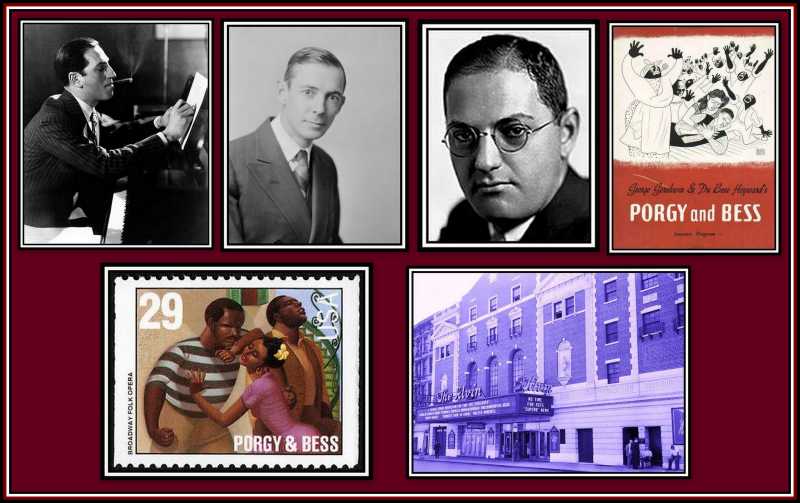
Click
on the collage to hear
the Overture and
Summertime (sung
by Anne Brown) from
the original
stage production.
George
Gershwin, DuBois Heyward,
Ira Gershwin, U.S. Postal
Stamp & The Alvin
Theatre, New York City
where Porgy and
Bess was first
produced
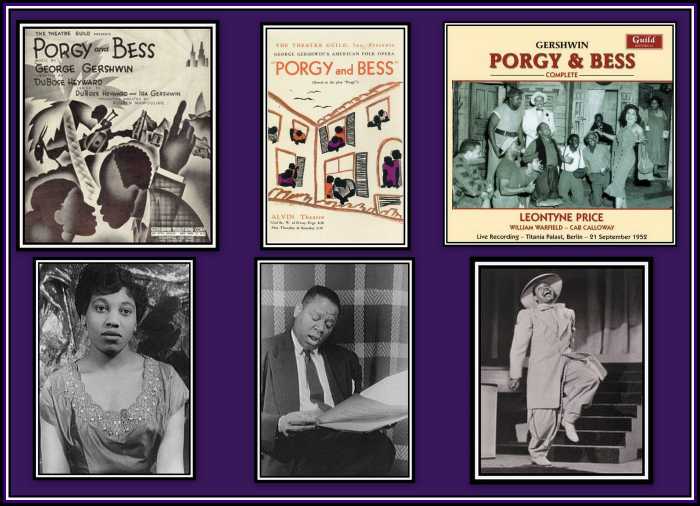
Click
on the collage to hear Bess
you is my woman now
by Leontyne Price &
William Warfield (1952).
The
Theatre Guild Production of
Porgy and Bess, 1952
featuring Leontyne
Price, as Bess,
William
Warfield, as Porgy
and Cab
Calloway, as
Sportin' Life (this role
was created with him in
mind)
From all
reports, the making of
the film, Porgy and
Bess, was fraught
with difficulties,
including a fire that
destroyed the sets and
costumes, problems
finding a screenwriter,
dismissal of the original
director, Rouben
Mamoulian who also
directed the initial Broadway
production and with
the casting of some of
the roles. According to
several sources, Dorothy
Dandridge was the
producer’s only
choice to play Bess
however she
apparently was never that
keen on the role.
Finding Porgy also
proved difficult. Harry
Belafonte refused it and
Sydney Poitier somewhat
grudgingly agreed to play
the role. Brock Peters,
Diahann Caroll and Pearl
Bailey also appeared in
the film, although Ms
Bailey informed the
costume designer that she
refused to wear a bandana.
Earlier, various other
performers had been
considered for roles in
the film including sports
personalities and the
singer, Clyde McPhatter.
The most enthusiastic
actor to appear in the
film was Sammy Davis Jr
who played Sportin’
Life. At first,
Samuel Goldwyn found him
unacceptable and had
originally offered the
role to Cab
Calloway,
but once he refused the
role, intensive lobbying
by Mr. Davis' friends
caused Mr. Goldwyn to
give the role to Sammy
Davis Jr.
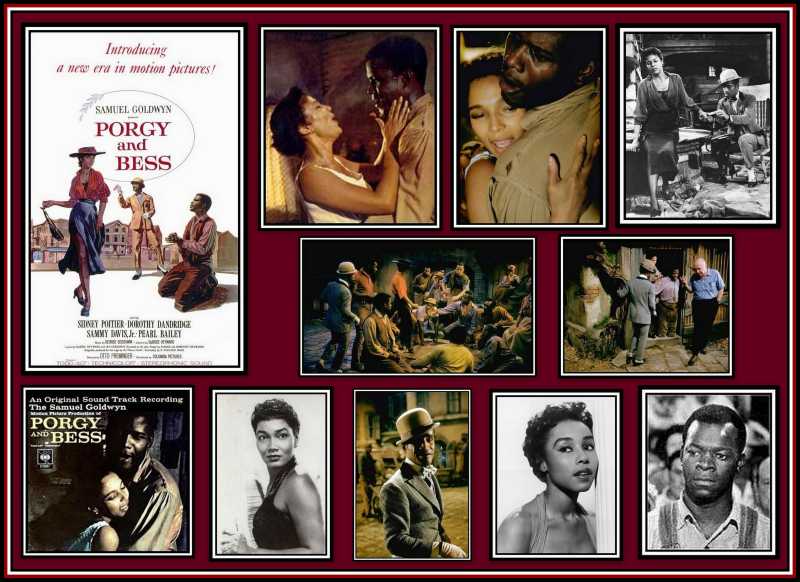
Click
on the poster above to
hear: Summertime
(Diahann Carroll); I got
plenty of nuttin'
(the singing voice of
Robert McFerrin); Bess,
you is ma woman now
(the singing voices of
Robert McFerrin &
Adele Addison); and Oh, I
can't sit down - picnic
(Pearl Bailey)
Click on the left picture
of Dorothy Dandridge and
Sidney Poitier to hear: I
loves you Porgy
Click on the right
picture of Dorothy
Dandridge and Sidney
Poitier to hear: Oh
Lawd, I'm on my way
Click on the picture
of Sammy Davis Jr. to
hear It
ain't necessarily so
Click on the picture
of Diahann Carroll to
hear Summertime
Top
Row: Film
Poster; Dorothy Dandridge
with Sidney Poitier &
Sammy Davis, Jr.
Middle
Row: Scene
from the film and Otto
Preminger with the film's
principals
Bottom
Row:
Soundtrack album cover,
Pearl Bailey, Sammy
Davis, Jr., Diahann
Carroll and Brock Peters
The search
for a director also
proved troublesome. Once
Rouben Mamoulian had been
let go, Otto
Preminger was asked to
take the helm. This was
to be the second occasion
that he replaced Mr.
Mamoulian on a film, the
first being in 1944 when
he took over the
direction of Laura.
At the time of filming,
the relationship
between Ms Dandridge and
Mr. Preminger was over
and working together
proved difficult for her
especially when he
criticised her
performance.
The film
received it premier in
New York City in June
1959 and received mixed
reviews. Its run in
Atlanta was cancelled
after black reviewers
objected to the film.
Later the producer was to
cancel other openings in
further cities. The film
did not open in London
until October 1962, but
this was due to the Dominion
Cinema not
being free until the
closure of South
Pacific, which had
been showing there since
1958. At that time, the Dominion
was the only cinema
in London where
presentations in TODD-AO
could be screened. I
saw the film in 1963 on a
very small screen. The
setting of the film is Catfish
Row in Charleston,
South Carolina and most
of the action takes
place in this small
street. While sitting in
the cinema, I remember
wondering why it had been
filmed in such a widescreen
format, as nothing
about the film seemed to
require this. Sadly, I
found the film to be
disappointing and above
all, claustrophobic! I
especially did not like
the muted colours used.
However, what I did enjoy
were the performances of
Dorothy Dandridge and
Sydney Poitier. I found
them to be the perfect
Bess and the perfect
Porgy. I also found
the music to be excellent
and remarkably well
interpreted. The film
earned only half of its
initial outlay and
following a few
television broadcasts, it
had practically
disappeared by the
mid-1970s. Once the
rights to the film
reverted to the Gershwin
and Heyward estates, it
could only be shown with
their permission. The
executors of the estates
refused to allow its
screening until 2007,
when they agreed to two
screenings at the Zigfield
Theatre in New York
City. These showings were
true theatrical events
and included the overture
and the intermission and
exit music along with a
discussion with Otto
Preminger’s
biographer.
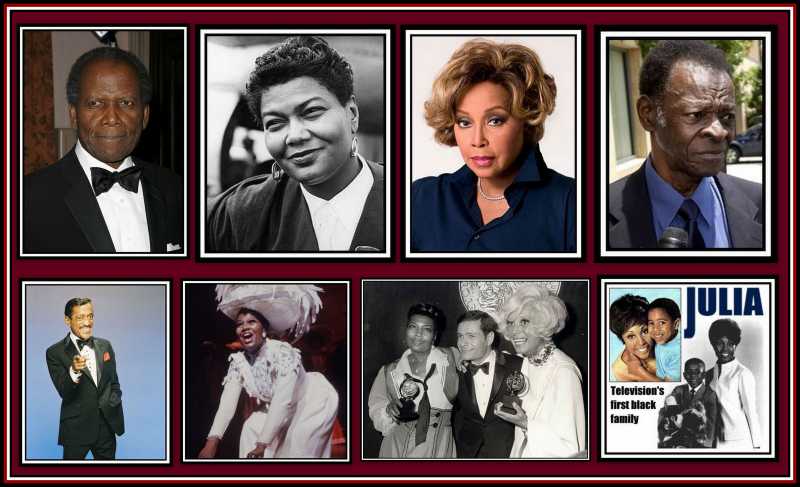
Top
Row: Sidney
Poitier, Pearl Bailey,
Diahann Carroll
Brock Peters
Bottom
Row: Sammy
Davis, Jr., Pearl Bailey
(as Dolly Levin in
Hello Dolly),
Pearl Bailey with a Tony
Award (for her role
in Hello Dolly; with
Jerry Herman and Carol
Channing), & Diahann
Carroll as Julia together
with Marc Copage
Despite
the lack of the
commercial success of the
film and the inability of
the recently presented musical
stage version to find
an audience, the musical
score of Porgy and
Bess has been
recorded by many singers
and musicians and
interpreted in a wide
variety of styles.
This is clearly
illustrated by the
musical links given here:
Here
come da Honey Man
- Cleo Laine & Ray
Charles
It
ain't necessarily so
- Cleo Laine & Ray
Charles
I
got pleny o' nuttin'
- Ella Fitzgerald &
Louis Armstrong
Summertime
- Ella Fitzgerald &
Louis Armstrong
Summertime
- Miles Davis
Summertime
- Janis Joplin
Summertime
- Sidney Bechet
Summertime
- Billie Holiday
Bess
you is my woman now
- Leontyne Price &
William Warfield
(European Tour, 1952)
I
love you Porgy
- Nina Simone
Selections
from Porgy & Bess
- Sammy Davis, Jr.
My
man's done gone now
- Diahann Carroll
CARMEN
- MUSICAL AND PHOTO
GALLERY
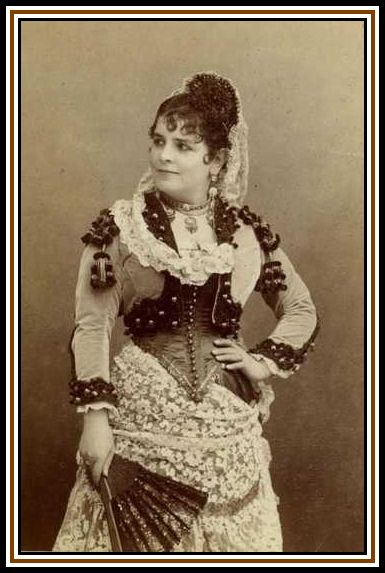
The First
Carmen - Celestine
Galli-Marie
Overture
- The Metropolitan Opera
House, New
York, conductor,
James Levine
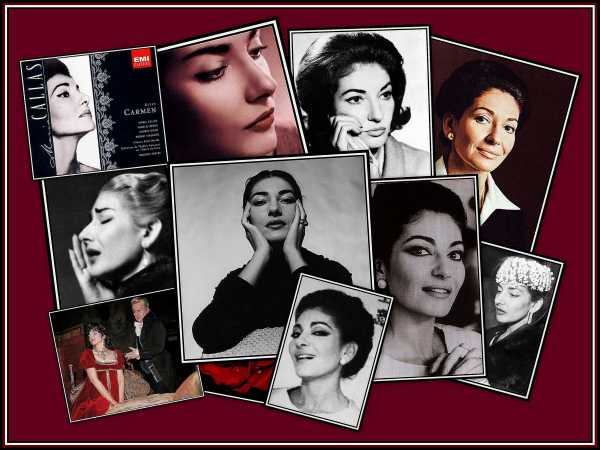
Maria
Callas
Habanera
- Covent Garden,
1962
Les
Tringles Des Sistres
Tintaient (The
Gypsy Song)
Seguedille
- Hamburg, 1962
The
Card Scene
Finale
- with Guiseppi
de Stefano, Royal
Festival Hall, 1973
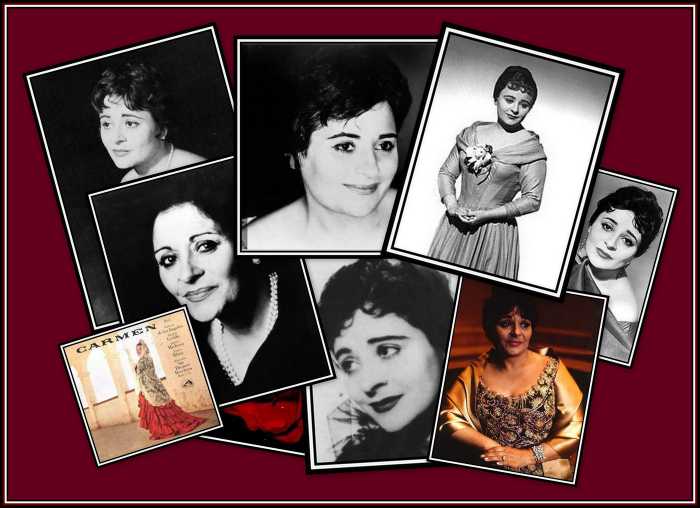
Victoria
de los Angeles
Habanera
Seguidille
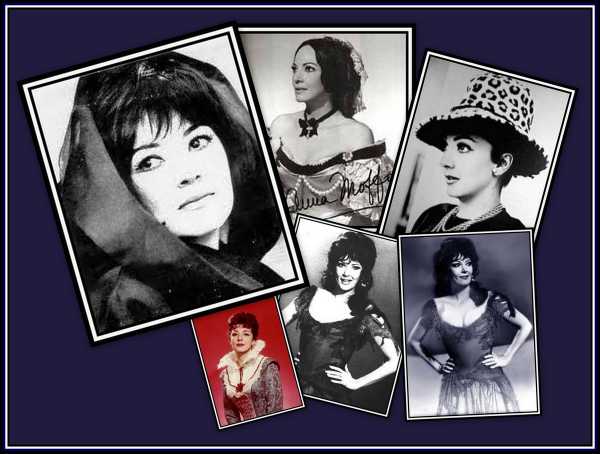
Anna Moffo
Habanera
Je
dis que rein ne
m'epouvante
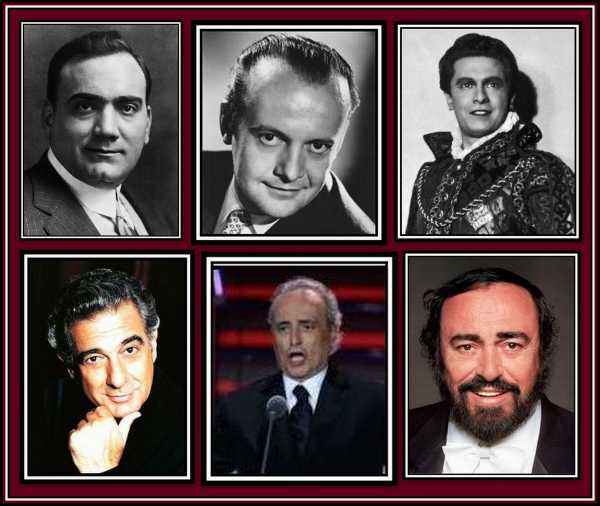
Top
Row: Enrico
Caruso, Tito Gobbi &
Giuseppi de Stefano
Bottom Row: Placido
Domingo, Jose Carreras
& Luciano Pavarotti
La
fleur que tu m-avais
jetee
- Placido Domingo
La
Fleur que tu m'avais
jetee
- Jose Carreas
La
fleur que tu m'avais
jetee
- Luciano Pavarotti
The
Toreador Song
- Ruggero Raimondi as El
Matador (with Placido
Domingo & Julia
Migenes)
Labas,
laba, dans la montagne
- Elena Obraztsova and
Placido Domingo
Finale
- Agnes Baltza & Jose
Carreras
Finale
- Teresa Berganza &
Placido Domingo
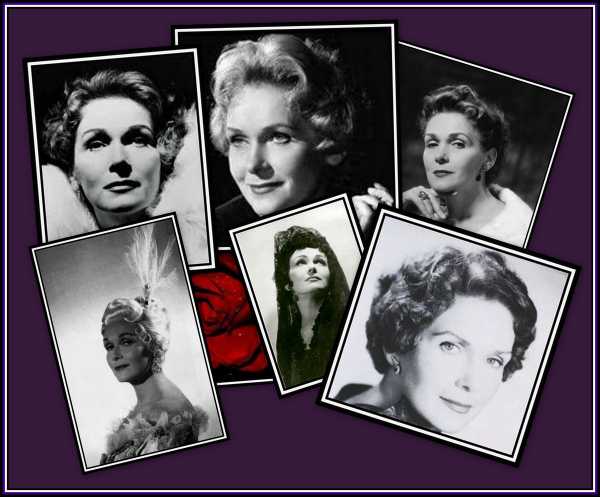
Elisabeth
Schwarzkopf
The
Card Scene
- Elena Obraztsova,
December 1978
The
Card Scene
- Shirley Verrett, 1971
The
Card Scene
- Stephanie Blythe, 2000
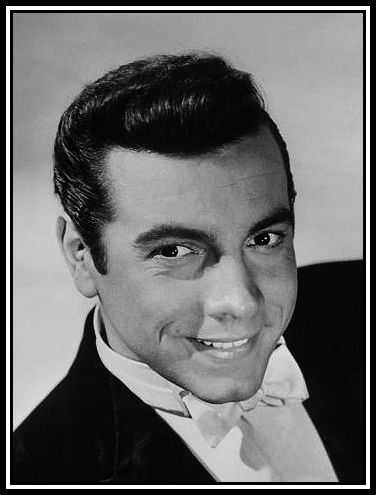
At
the time of his death in
1959 at 38 years of
age, Mario
Lanza was still the
most famous tenor in the
world.
The author Eleonora
Kimmel said that he
blazed like a meteor
whose light lasts a brief
moment in time.
La
Fleur que tu m'avais
jetee
|